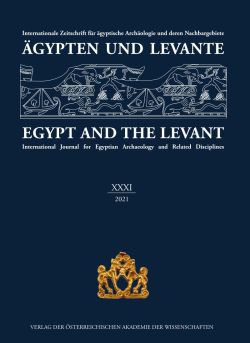
Ägypten und Levante 31, pp. 425-450, 2021/12/28
Internationale Zeitschrift für ägyptische Archäologie und deren Nachbargebiete
International Journal for Egyptian Archaeology and Related Disciplines
Geoanalytical results on imported ceramics from Egypt demonstrate wide-ranging links between 1st Dynasty Egypt and different Levantine commodity production centres. This diffuse network contrasts with the highly efficient Old Kingdom supply chain, based on the maritime route to Byblos and the surrounding region in northern Lebanon. A dataset of imported pottery from the 1st Dynasty elite cemetery at Abu Rawash builds on this picture. Early Bronze Age II/Early Levant II ceramic types from the site, mostly variations of one-handled jugs, were identified by thin-section petrography as originating in the Central Levant and the Central Jordan Valley/ northern Canaan. By the early Old Kingdom, a major transition had occurred in Egyptian trade routes, focusing primarily on northern Lebanon. Combed jars replaced the diverse range of jugs and jars as the main imported type in Egypt, yet the Early Dynastic one-handled jug shape continued symbolising the idea of imported liquid commodities in the artistic canon for much of the third millennium.
Keywords: Abu Rawash, Egypt, Byblos, Early Dynastic period, Old Kingdom, trade, ceramics, petrography